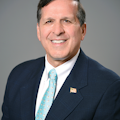Never underestimate your hygienist
For many years, dental hygienists have been underestimated when it comes to their ability to increase practice production. While many dentists recognize that hygienists provide hygiene services that contribute to overall practice production and profitability, they tend not to think about (or measure) how much production can be identified by dental hygienists, presented to patients, and more easily accepted during the dentist’s exam.
The other side of hygiene production
The main and first side of dental hygiene production is what the hygienist does directly. Most practices measure this and have a sense that, on average, 75% of practice production is generated by doctors and 25% is generated directly by dental hygienists. However, practices that want to increase total production can easily do so if dental hygienists are trained to identify, present, and motivate patients to accept treatment.
Here is a partial list of services—beyond traditional hygiene services—that represent areas where dental hygienists can contribute:
- Whitening
- Veneers
- Follow up on all incomplete treatment
- Follow up on presented treatment that has not been accepted
- Oral appliances for sleep apnea or teeth grinding
- Implants
- Other practice services if applicable, such as Botox
More by Dr. Roger Levin
Improving case acceptance
The impact of setting a daily goal
Work with your hygienists to help them understand how they can further benefit the practice and patients by identifying all non-direct hygiene production. You can help educate dental hygienists by providing them with three major benefits of every service and training them in the diagnostic process. Some practices consider commissions or bonuses based on indirect hygiene production, and others simply make it part of the practice culture.
Keep in mind that dental hygienists typically have one hour with patients. This presents sufficient time to perform hygiene services and identify, discuss, educate, motivate, and close additional treatment with a final confirmation by the doctor. By properly implementing this approach, it isn’t unusual for a dentist to enter a hygiene room and hear the patient say, “I would like to have six of those upper veneers that Sally told me about.” This is a delightful moment! Don’t underestimate the power that dental hygienists have in increasing your practice production.
About the Author
Roger P. Levin, DDS, CEO and Founder of Levin Group
Roger has worked with more than 30,000 practices to increase production. A recognized expert on dental practice management and marketing, he has written 67 books and more than 4,000 articles, and regularly presents seminars in the US and around the world. To contact Dr. Levin or to join the 40,000 dental professionals who receive his Practice Production Tip of the Day, visit levingroup.com or email [email protected].

